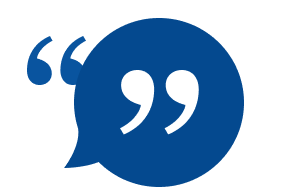Transcript for Anaesthetics Training in Northern Queensland
[Soft music plays in the background]
[Text on screen] Specialty Training in Northern Queensland, Anaesthetics.
>> Dr Sorcha Evans:
[Text on screen] Dr Sorcha Evans, Staff Specialist Anaesthetics, Townsville
So, I’m from Northern Ireland. I moved to England to go to uni. Worked there for a couple of years, didn’t know what I wanted to do and thought I’d jump on the bandwagon and went down under for a working holiday and just loved the lifestyle. I did a bit of anaesthetics and ICU, and it was really good fun. You get some hands-on skills; you get to see pharmacology and physiology in action. And more importantly, the bosses were the most relaxed and happiest people I’d ever met, that actually had a life outside of work. So I was like, “I’ll give that one a crack.”
>> Dr David Howell
[Text on screen] Dr David Howell, Anaesthetics Registrar, Townsville
My experiences within the department were great. I really enjoyed what Anaesthetists do and decided that’s what I wanted to do.
>> Dr Alexander Cottle
[Text on screen] Dr Alexander Cottle, Senior Staff Specialist Anaesthetist and Supervisor of Training, Mackay Base Hospital
I’ve always like physiology and pharmacology as sciences, and this is one specialty that you can really apply that to. It’s live pharmacology. Everyday you give the drugs, and you see the effect, you don’t have to wait 10 years.
>> Dr Sorcha Evans:
One of the nice things about North Queensland now, is that you can do all your training in North Queensland, so you don’t need to go to Brisbane or Melbourne or Darwin if you don’t want to. We offer all the specialities that you need and all the anaesthetic techniques that you need. We do some high-level stuff like the tertiary paeds, we do high-level obstetrics, we do some high-risk ENT cases and cardio-thoracic and neurosurgery. So, it offers everything here, but it’s got that lovely small hospital feel about it.
>> Dr David Howell
The anaesthetic training program is over 5 years. It’s very hands-on, you’re in theatre with patients all day every day. With each year, you develop more experience and become more confident with providing anaesthetics for more complex patients.
>> Dr Alexander Cottle
You get exposure to a wide range of well and unwell adults, children, quite young children, and obstetric anaesthesia. In big hospitals, you have to do these in blocks, like 3 or 6 month blocks and you never get exposed for the rest of your training. Here it’s just that you always get exposure all the way through.
>> Dr Sorcha Evans:
You get much more hands-on experience, and you also get much more responsibility. There’s less of a hierarchy, and we tend to be here and supportive but able to stand back and let you learn and take the reins.
>> Dr David Howell
Within the department, we have a lot of experienced consultants who are great at teaching and facilitating learning and helping you achieve your goals. We have a large department, but it’s very supportive. Everyone knows each other and everyone socialises outside of work.
>> Dr Sorcha Evans:
We’ve also got a bit of an active social club here that I’ve kind of self-elected myself to be the leader. We were at trivia last night, we have drinks every couple of months. So the department is social, but also, I’ve got friends from various clubs, whether that be from salsa dancing or the Irish club that we have here. There’s a lot happening if you want to get involved.
>> Dr David Howell
It’s sunny almost every single day of the year, so you can always plan the weekends. We’ve got the beautiful Strand, which you can walk along of an afternoon. I walk my dog. You can live on the beach and then still drive to work; and there’s no traffic, so it doesn’t take you very long at all.
>> Dr Alexander Cottle
When you have a natural disaster, like cyclone Debbie that we had last year, the community as a whole certainly pulls together. All the people who volunteered to stay in the hospital at the time of the cyclone – I was just amazed. And that makes me feel that this is a really good place to be. I know if I’m ever in trouble, there’ll be people that I can rely on.
[Text on screen] Explore specialty training opportunities in northern Queensland. nqrth.edu.au
All Anaesthetics specialty training can be completed in northern Queensland in Cairns, Mackay and Townsville, with no need to travel to metropolitan centres.
The region offers all subspecialties and anaesthetics techniques to complete training.
This video was funded by the Australian Government Department of Health as part of the Regional Training Hubs initiative. Produced in partnership with northern Queensland health care providers and James Cook University.
[James Cook University crest appears on screen] Northern Queensland Regional Training Hubs. A network of medical training opportunities. nqrth.edu.au
End of transcript
